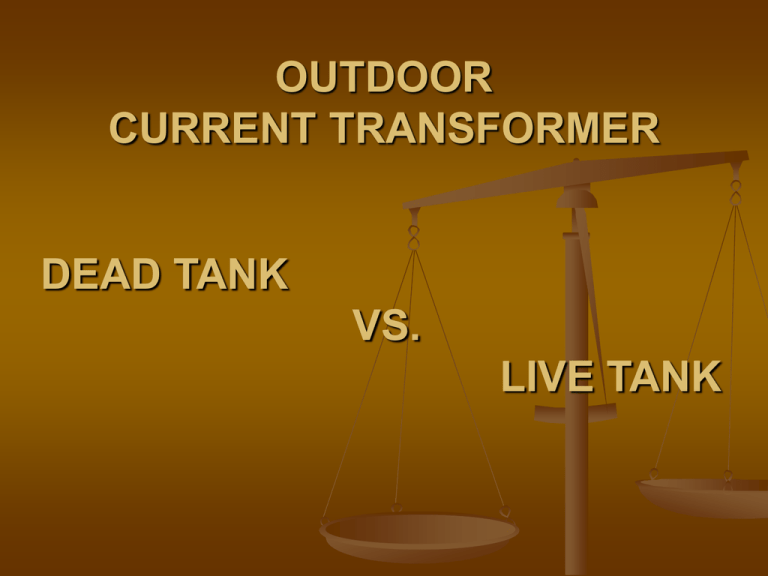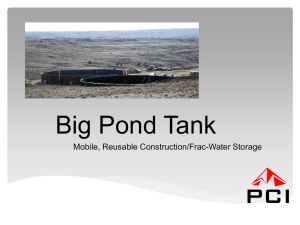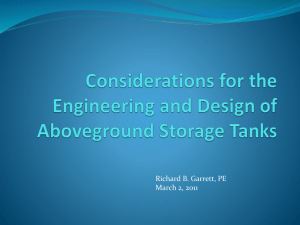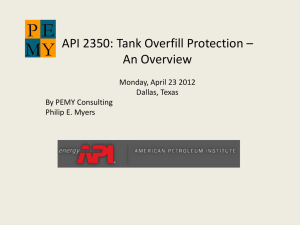ADVANTAGES OF LIVE TANK CTs. OVER DEAD TANK CTs.
advertisement

OUTDOOR CURRENT TRANSFORMER DEAD TANK VS. LIVE TANK OUTDOOR CT TOP HOUSING / TANK AT LIVE POTENTIAL i.e. LIVE TANK INSULATOR BOTTOM HOUSING / TANK AT EARTH POTENTIAL i.e. DEAD TANK LIVE TANK CT DEAD TANK CT CT CORES WITH SECONDARY WINDINGS ARE LOCATED INSIDE THE DEAD TANK CT CORES WITH SECONDARY WINDINGS ARE LOCATED INSIDE THE LIVE TANK Live Tank CT In live tank CT, the core with the secondary winding is housed in the top tank which is LIVE (AT HIGH VOLTAGE) In live tank, the core and secondary winding is insulated against the high voltage and housed in the top live tank. In live tank we insulate the core and secondary winding. Only after application of pre-defined insulation on secondary, primary is wound. Application of insulation over wound cores is easy. Dead Tank CT In dead tank CT, the core and secondary winding is housed in the bottom tank which is earthed or DEAD. In dead tank CT, the primary winding is brought down to the bottom tank and it is insulated from the earthed tank and cores. In dead tank CT, we insulate the primary winding. It is practically difficult to apply the pre-defined insulation over the primary because the primary needs to pass through the wound cores. Condenser Grading of insulation is easily done. Condenser grading of insulation is practically difficult to do. Insulation is robust and reliable Insulation is not robust. Primary winding is of shortest possible length and its natural shape offers high strength against the short time current dynamic forces. Heat generated during short time thermal current is the minimum (primary copper volume is minimum and the heat dissipation is fast – the primary copper is directly in contact with transformer oil) The transformer is compact and economical (considering fully oil filled and truly hermetically sealed CTs) The primary has to pass through the porcelain insulator and the larger length of the primary conductor produces maximum mechanical force during short time dynamic current which might damage the insulation. Heat generated during short time thermal current is maximum. (Copper volume is maximum and the heat dissipation is slow as the heat need to conduct through the major insulation which is normally a bad conductor of heat) The transformer is bulky and costly. (considering fully oil filled and truly hermetically sealed CTs)











